

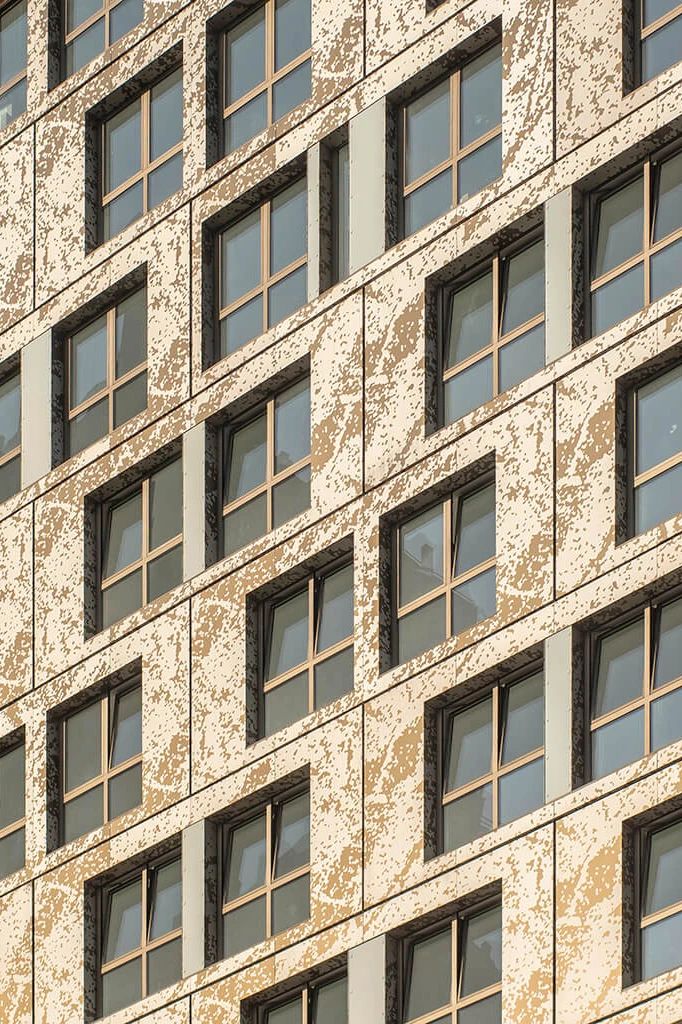
Shape and color have always been closely related to architecture. Rich colors and distinct blocks help us redefine rules and give new meaning to buildings, making them no longer exist solely as buildings.
We believe that color can change the creative space and is an excellent design language. The combination of color and material is necessary to convey beauty. When design concepts and solutions are combined, works of ingenuity and expressiveness emerge.
01.Our Domain
Tangram Architecten
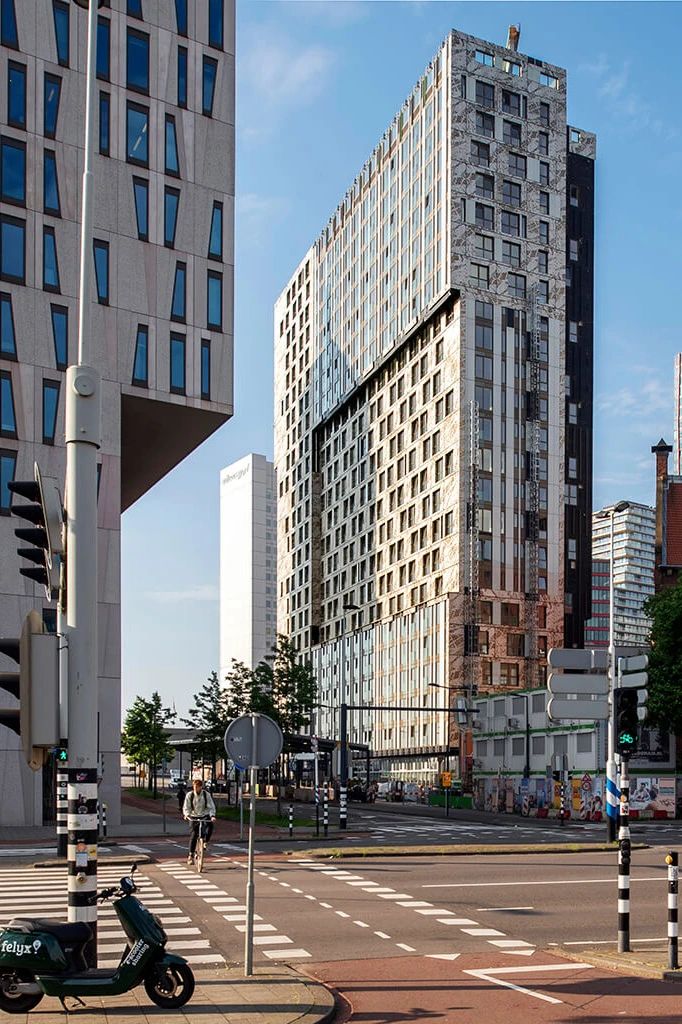
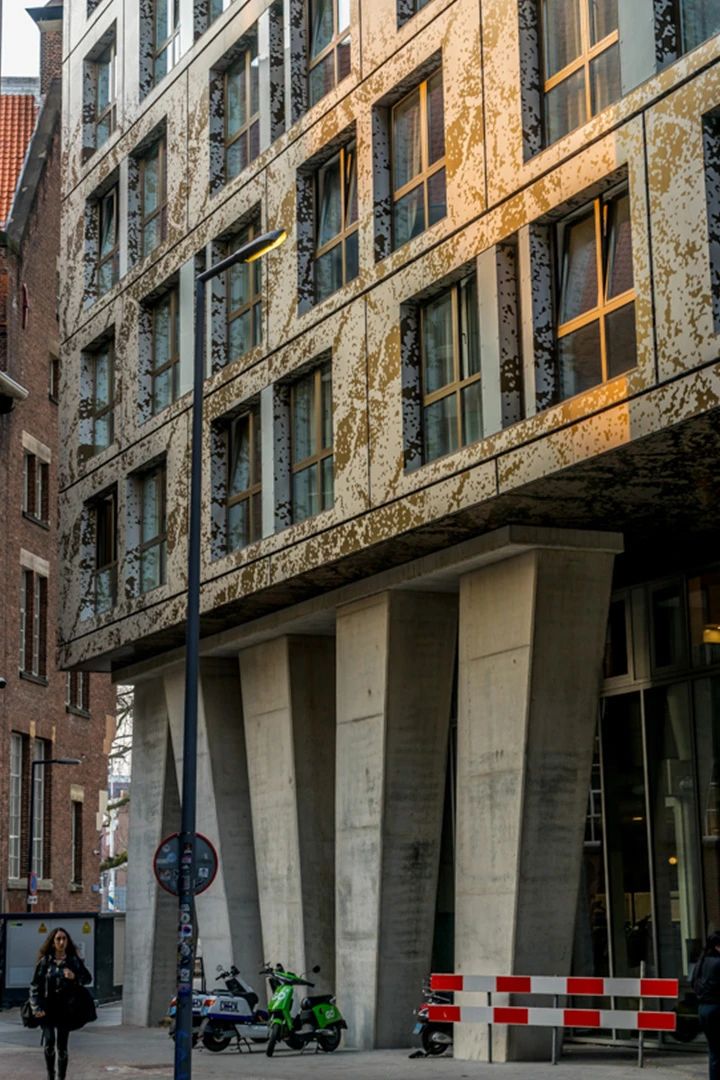
Our Domain Area Location©Peter de Ruig
Our Domain is located on a complex small plot of land, which is the only residential building that has not yet been rebuilt after being bombed and destroyed during World War II. It is also the last piece of the puzzle for the highly urbanized development of the area. Despite the small plot and diverse surrounding buildings, this building stands out visually.
The architect's ambition is to build a sturdy building, a lighthouse that revitalizes confidence, as a reference for the reconstruction of Rotterdam.
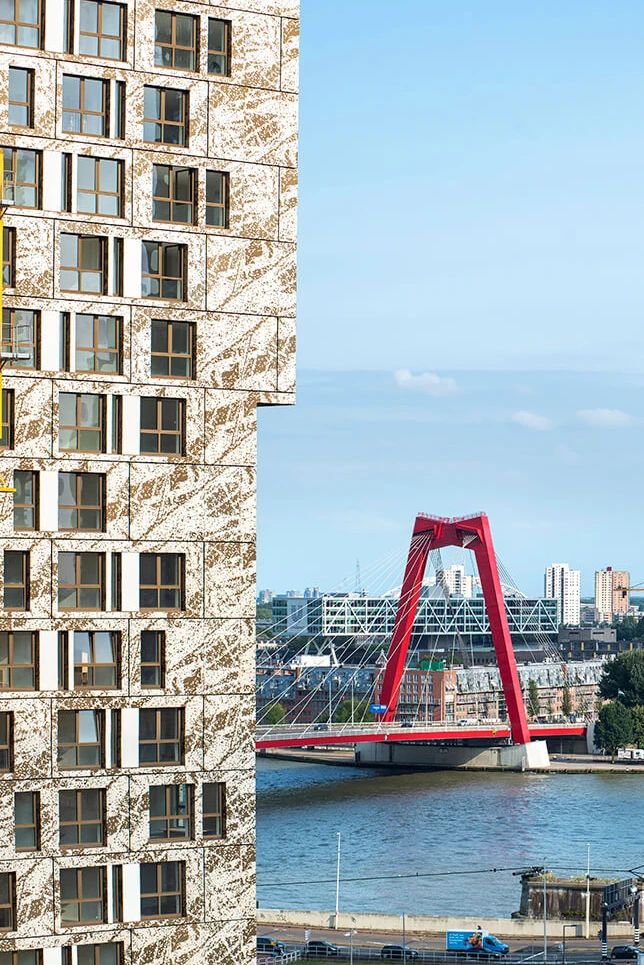

OurDomain building facade©Peter de Ruig
The building structure is also quite challenging. This thin building adjacent to Williamsburg has an open base and free columns, and must be sufficiently stable with a lightweight and high-strength building skin.
The designer designed based on archival photos of this devastated city, drawing inspiration from photos of the destroyed wartime port. The whimsical facade patterns abstractly reflect the images of the destruction caused by World War II. Simultaneously achieved through deep grooves, staggered seams, layered elevations, and large windows serving as urban bay windows.

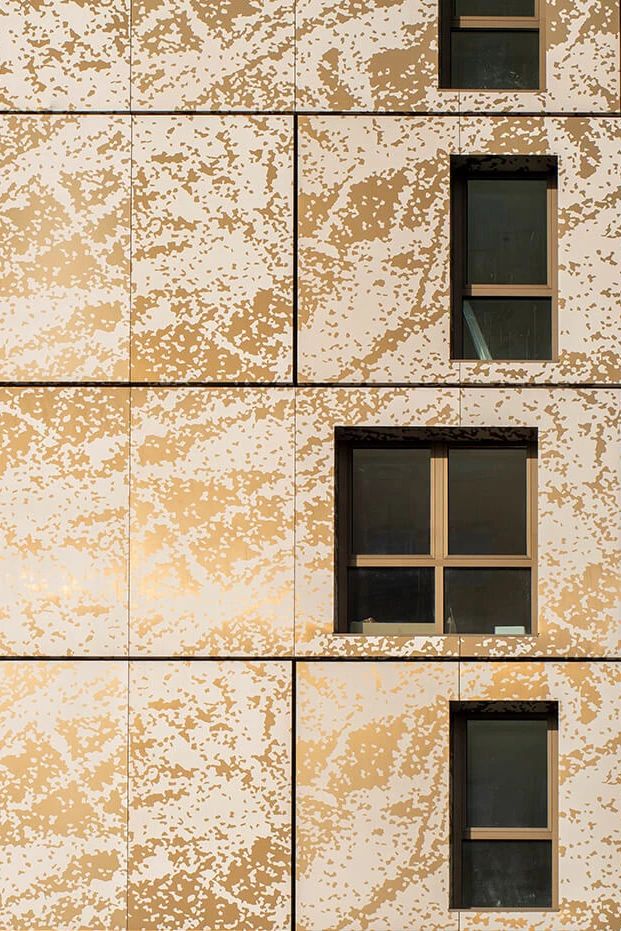
OurDomain facade details©Peter de Ruig
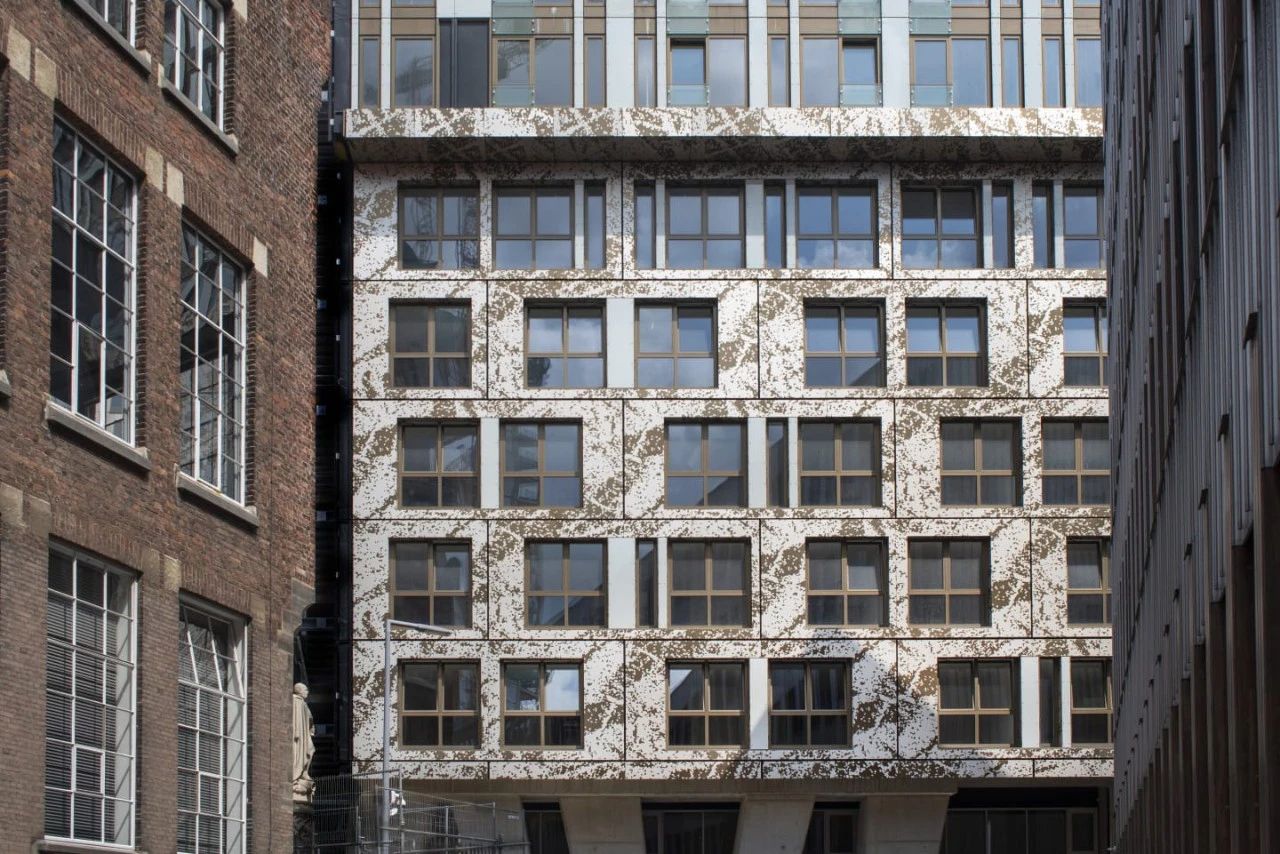

OurDomain facade details©Peter de Ruig
The production of aluminum composite materials has brought innovation in craftsmanship and materials, with alternating styles of gold and bronze colors on the facade. Manufacturers have expanded their design scope through a globally unique new anodizing process, which can create a unique exterior facade with personalized decoration and structure. According to different processing methods, the surface structure can range from rough and rust like to shiny and smooth, creating a unique multi-level texture and light refraction effect.
The entire building is 24 stories and 70 meters high, with 612 modern single rooms and apartment suites available for rent to students, young professionals, and short-term residents.
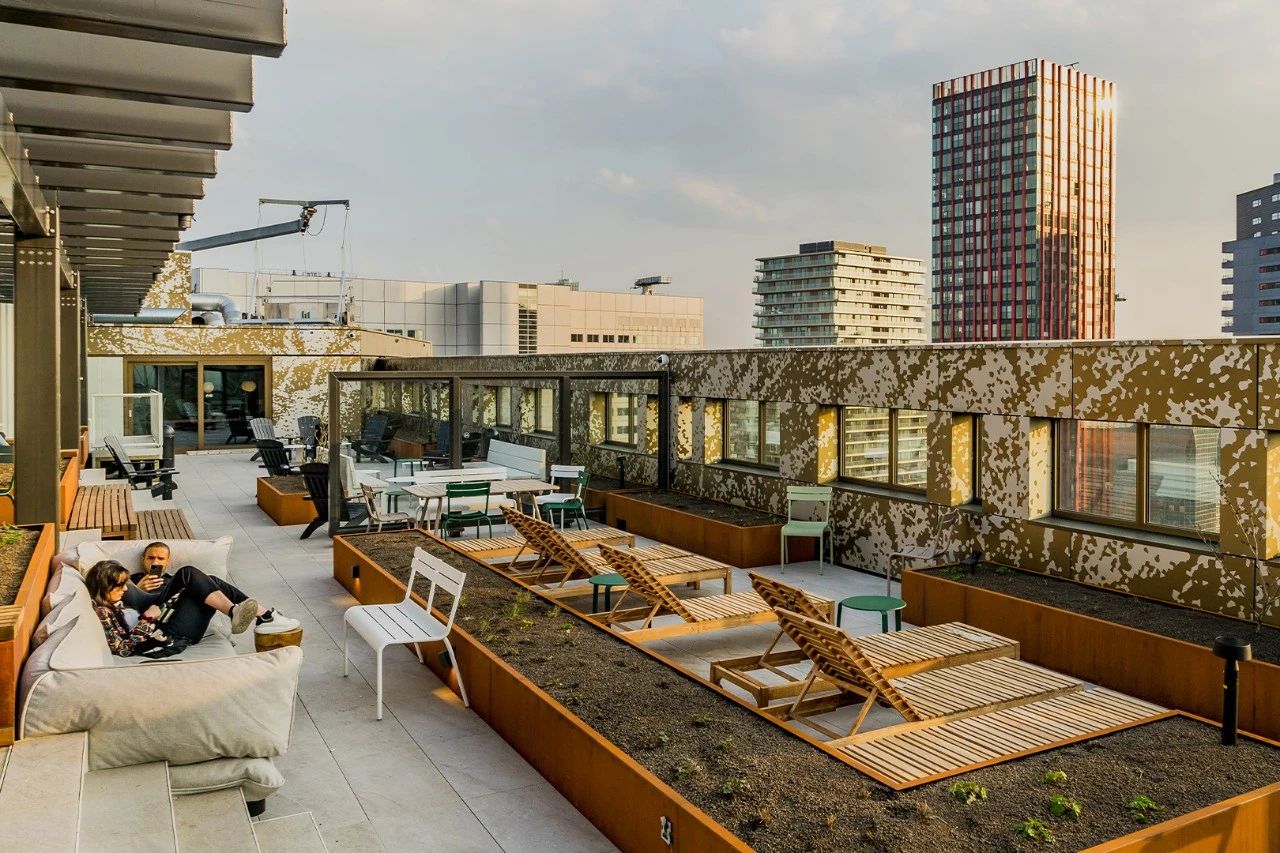
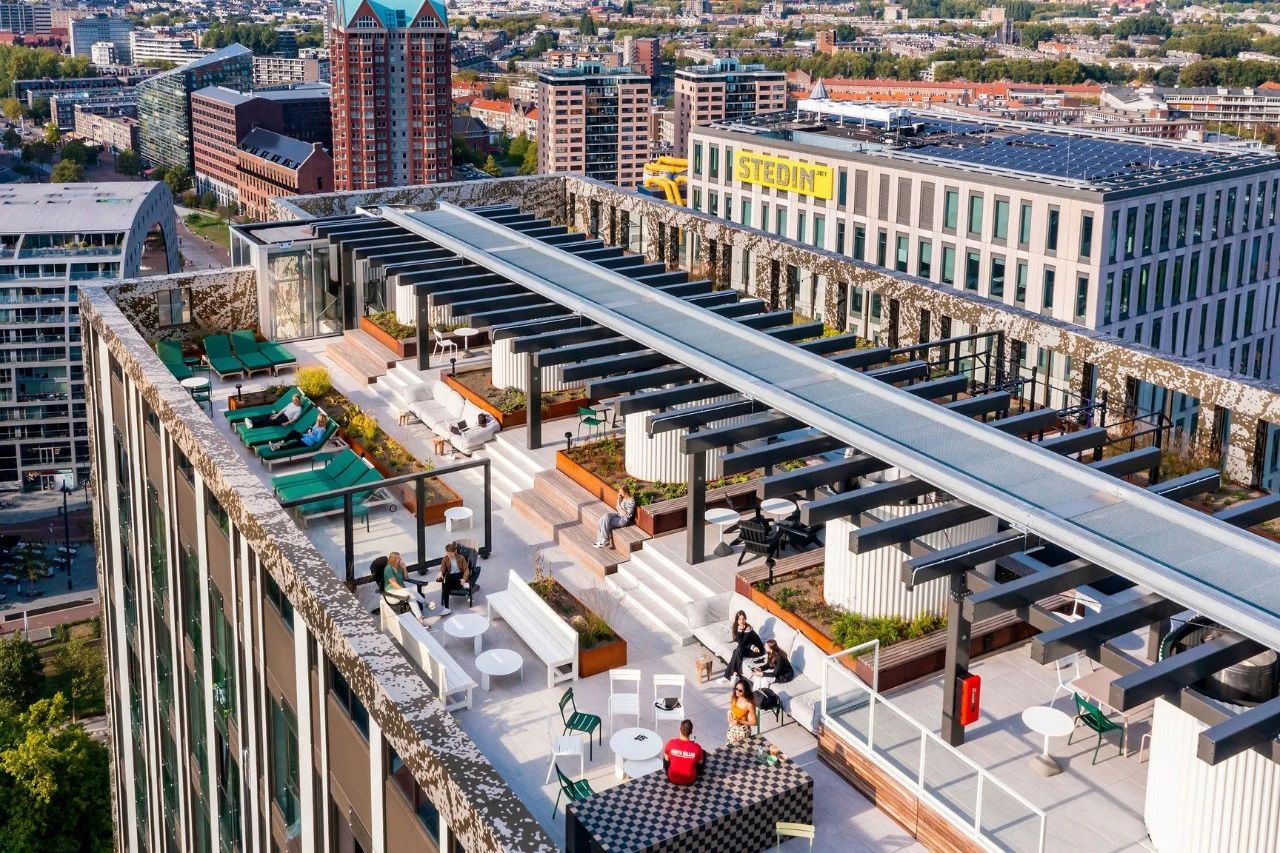
Our Domain Garden Roof © Peter de Ruig
There is a huge 600 square meter garden on the roof, offering views of the New Maas River and the city skyline. You can spend quality time with friends and neighbors in the leisure area, music room, and movie theater, work out in the rooftop gym, or relax in your own apartment.
02.Oman's "Cross Era" Museum
COX Architects
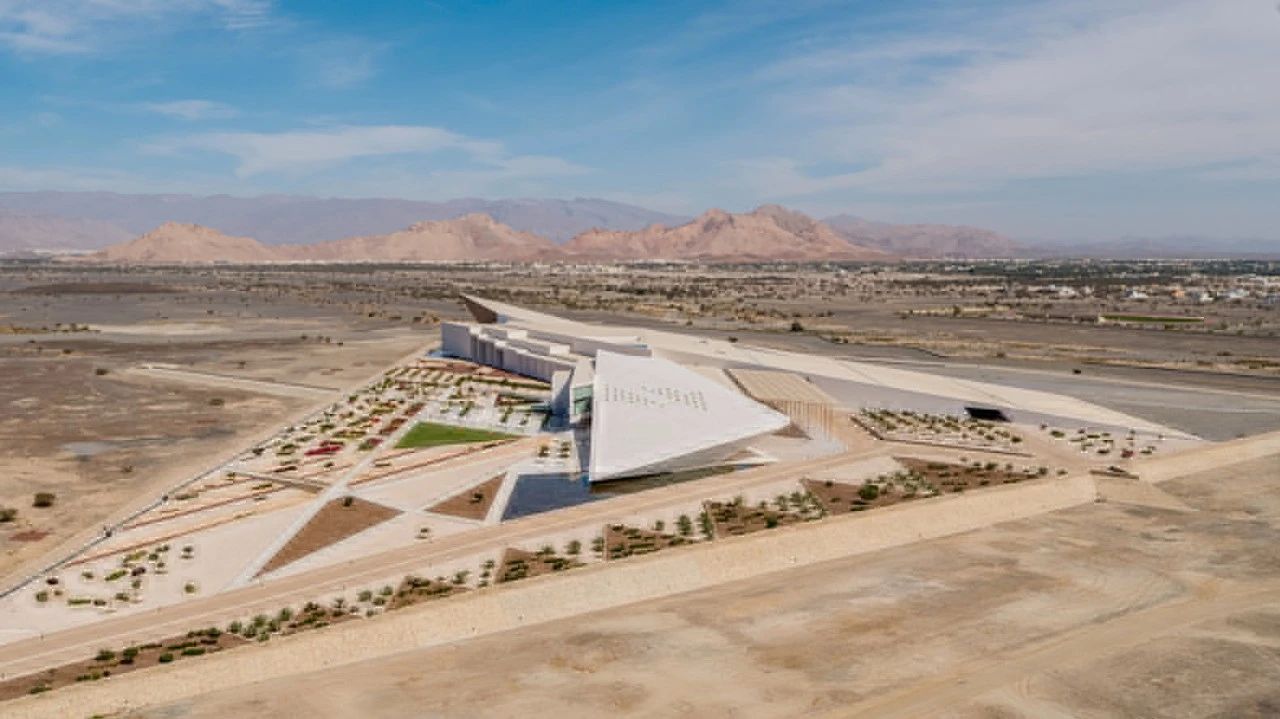

OMAN ACROSS AGES MUSEUM © Phillip Handforth
The Oman Intergenerational Museum is located in Nizwa, one of the oldest cities in Oman, and its design is inspired by the extraordinary landscape and geometric contours of the Hajar Mountains and their canyons. This museum is a tribute to Oman's rich history, culture, and long-term economic development, while also allowing people to gain a deeper understanding of Oman's future. It is a cultural and educational landmark for both Omani people and tourists. This building rises from the desert ground and extends to the horizon, its grand scale is breathtaking.
As a cultural landmark, the museum leads visitors through a series of immersive high-tech experiences to travel through the country's 800 million year history. The architecture stands out from this landscape, presenting a series of angular geometric shapes that complement the peaks and ridges of the Hajar Mountains. The exhibition design is in line with the architectural style, showcasing Oman's rich heritage from prehistoric times to modern times through the latest immersive technology.
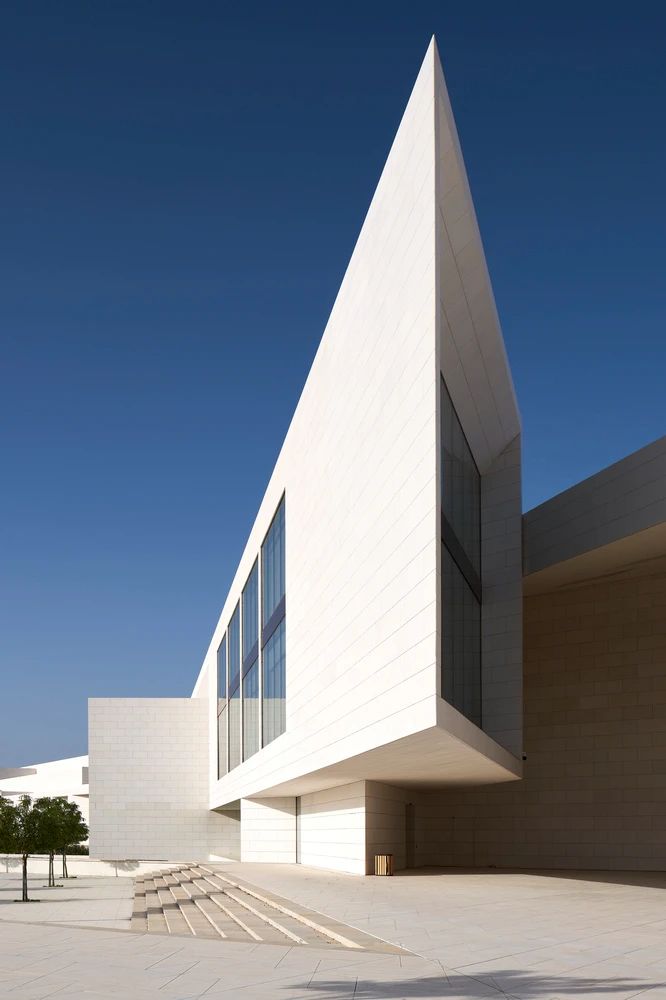
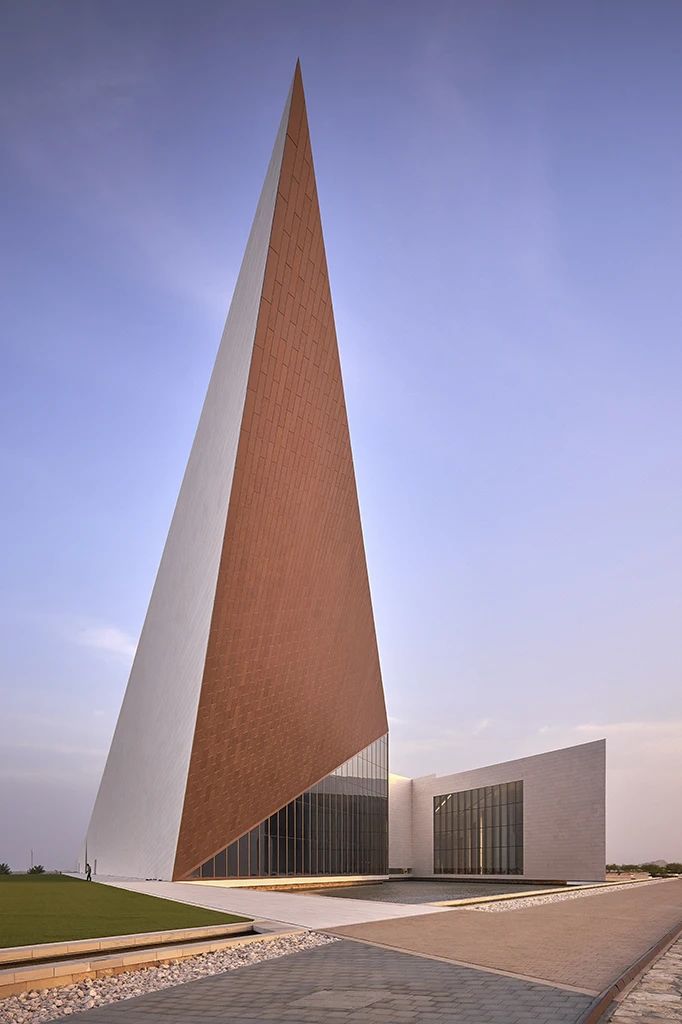
White natural stone and copper aluminum composite panel facade © Phillip Handforth
Behind the architect's initial design concept, there are two core sources of inspiration: landscape and culture. The terrain of Oman is highly infectious, primitive, and beautiful. Corresponding to this is the extraordinary history and culture of Oman and its people, and the fusion of this stunning geographical environment and human achievements has become the core of the design concept. This museum is largely dedicated to celebrating both of them together.
The ultimate architectural achievement is the perfect fusion of a country's remarkable human achievements and captivating landscape. There is an endless source of inspiration here, reflected in the fusion of people's personal stories with their grand cultural heritage and natural environment stories. The concept of architecture naturally arises from these inspiration points.
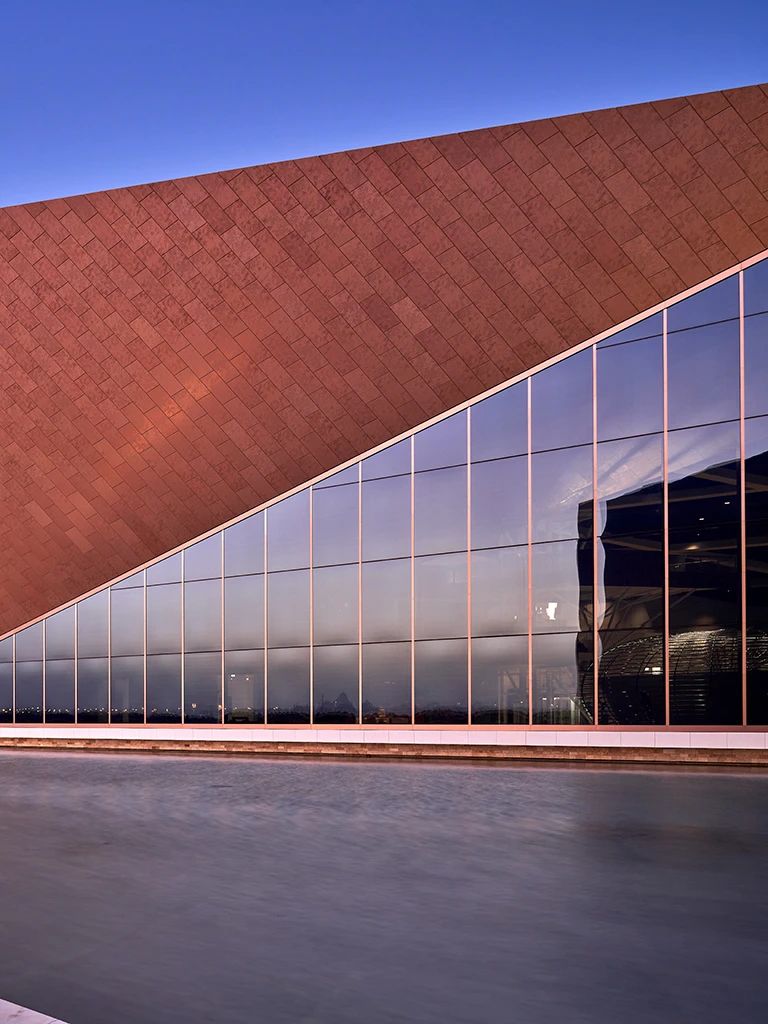
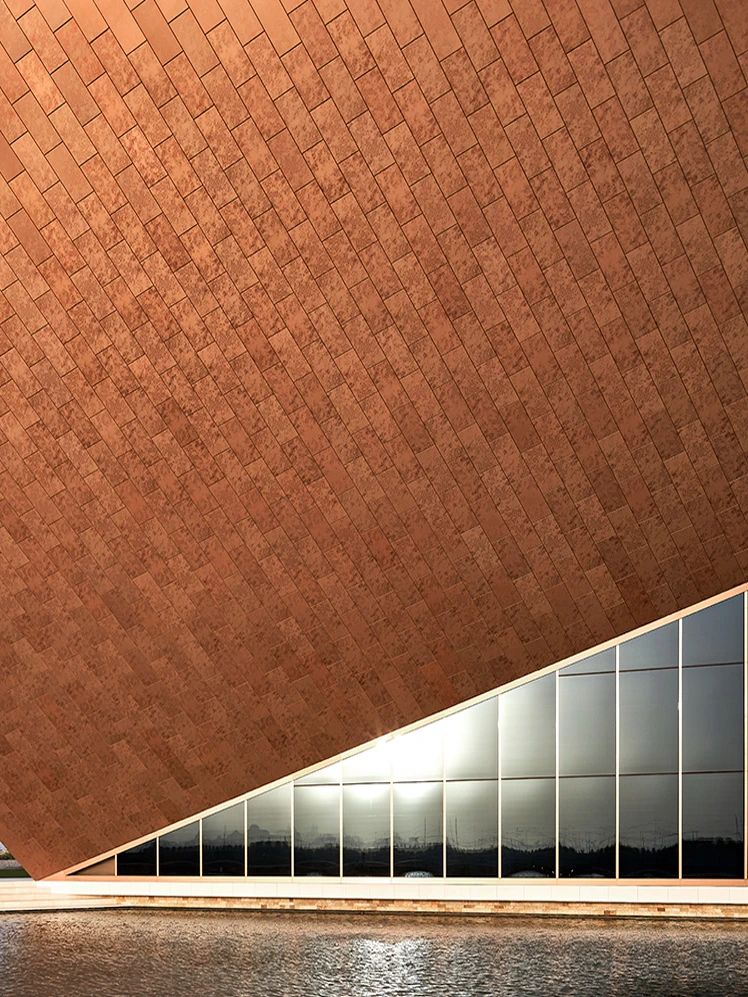
Copper colored aluminum composite panel facade and glass curtain wall © Phillip Handforth
The Hajar Mountains form a stunning jagged outline, closely adjacent to this building. The layout of the building draws inspiration from these extraordinary forms and abstracts them, transforming them into this unique structure. The building starts from the south and extends northward, resembling a mountain peak at the north end. Architecture itself is a part of storytelling, it is not just a shell, it is a carrier for telling stories.
In this way, the core narrative of the museum is echoed and strengthened within the architecture itself. A successful museum lies in the perfect combination of various narrative elements such as architecture, exhibitions, and experiential quality. It is this complete combination that gives the museum its unique personality and charm.
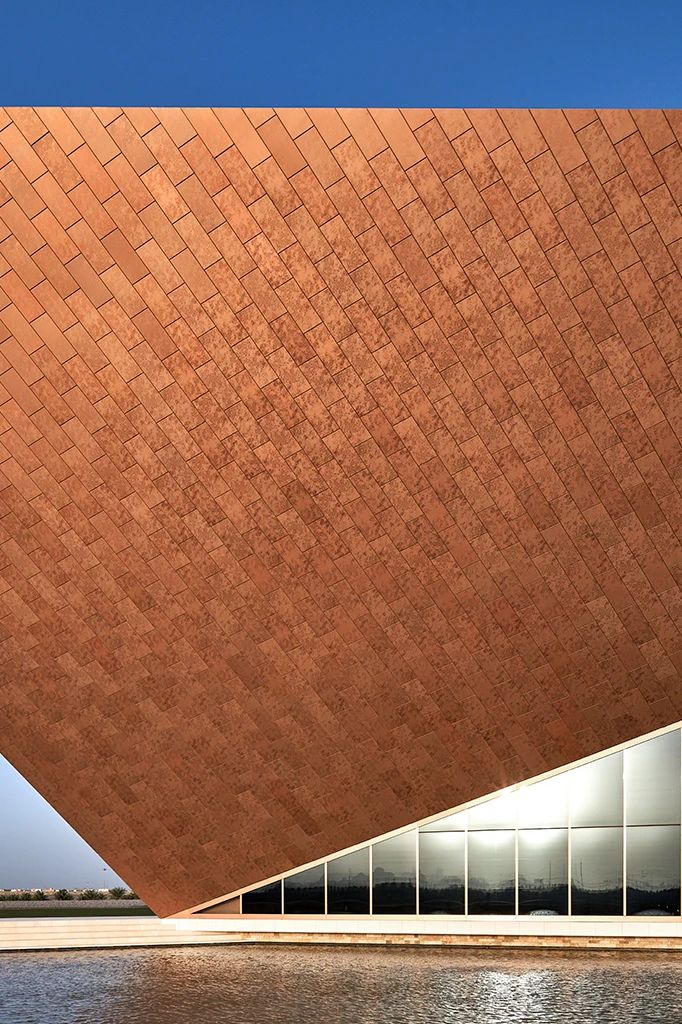
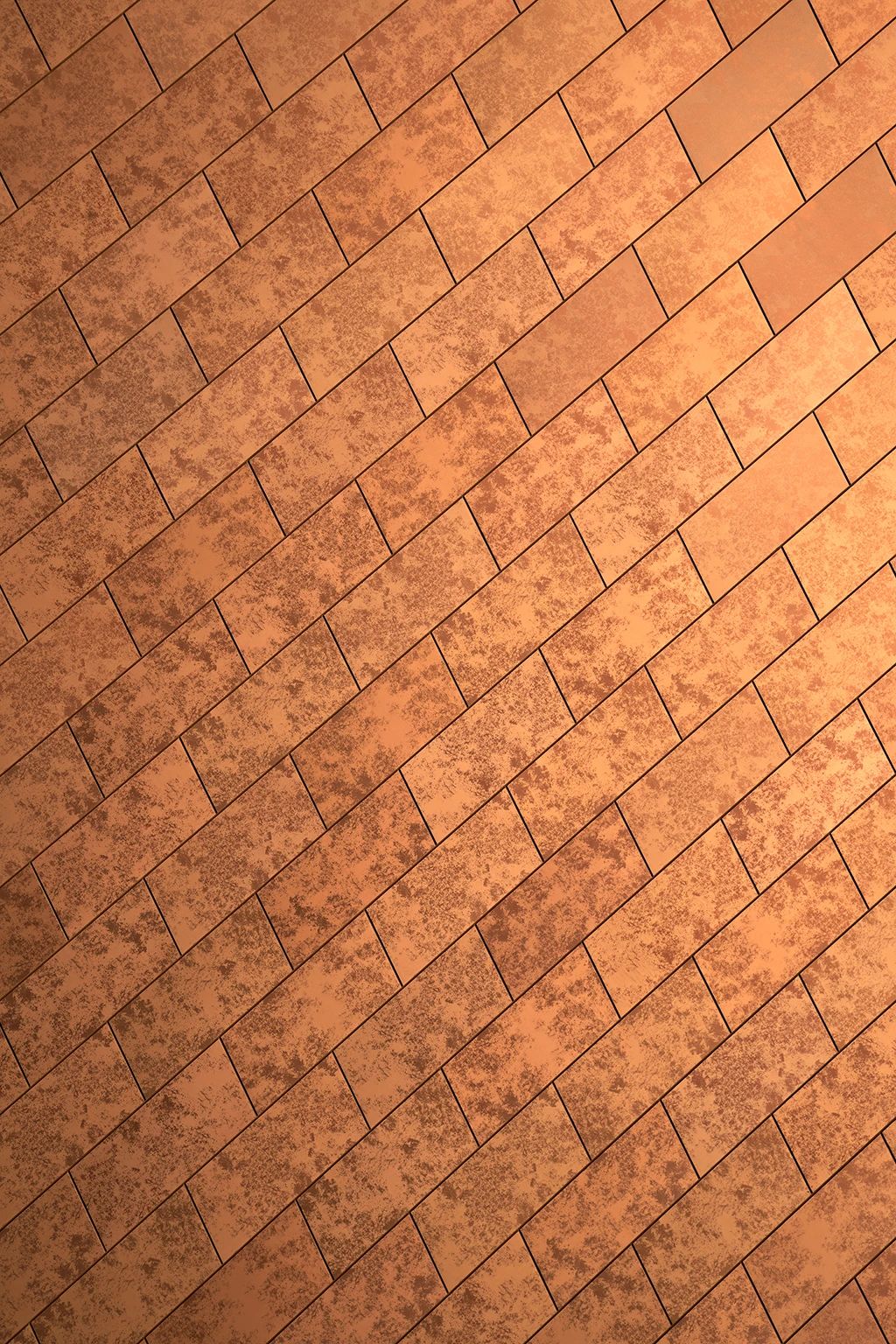
Copper colored aluminum composite panel facade details © Phillip Handforth
The Oman Cross Era Museum has pioneered a new model of museum experience. Its design fully utilizes the various potentials of architecture in terms of expression and communication, including scale, geometric shape, form, light, and field of view. It not only uses them as pure means of expression, but also provides a wide range of possibilities for installation display, exhibit display, and performance in different spaces.
This building adopts a steel structure, and its roof is designed as a truss system and a wilted inclined rib grid structure. This endows the building with great stability while achieving more functionality with fewer materials. It also enables buildings to easily and boldly overhang, tilt, and twist outward inside the building, with spacious column free spaces spanning up to 100 meters, some of which can reach up to 30 meters in height. A high ceiling curve. The board, unique light source, and special perspective create a sacred atmosphere.
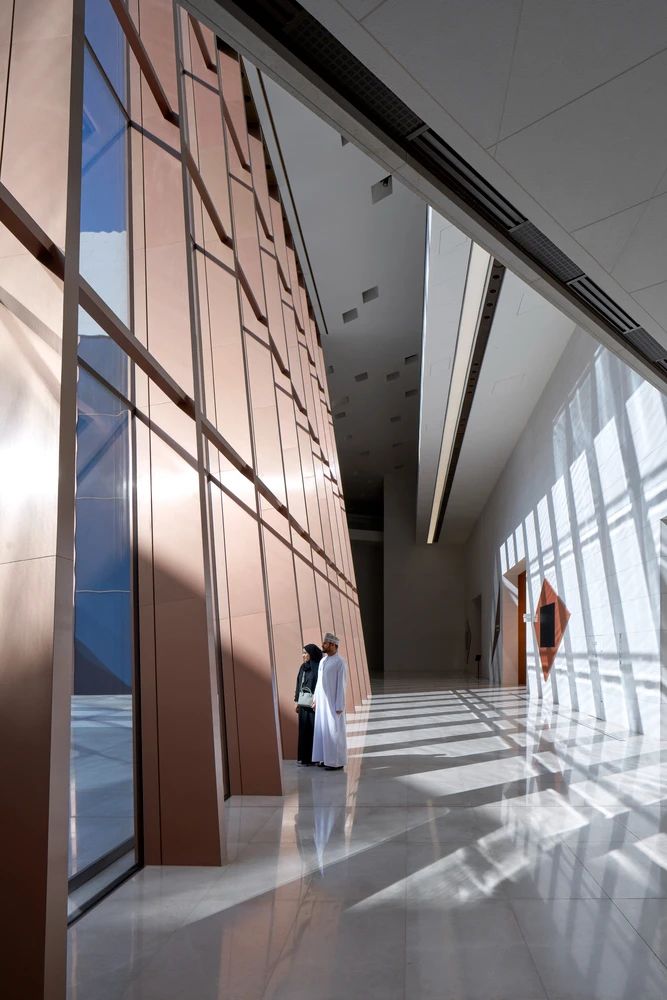
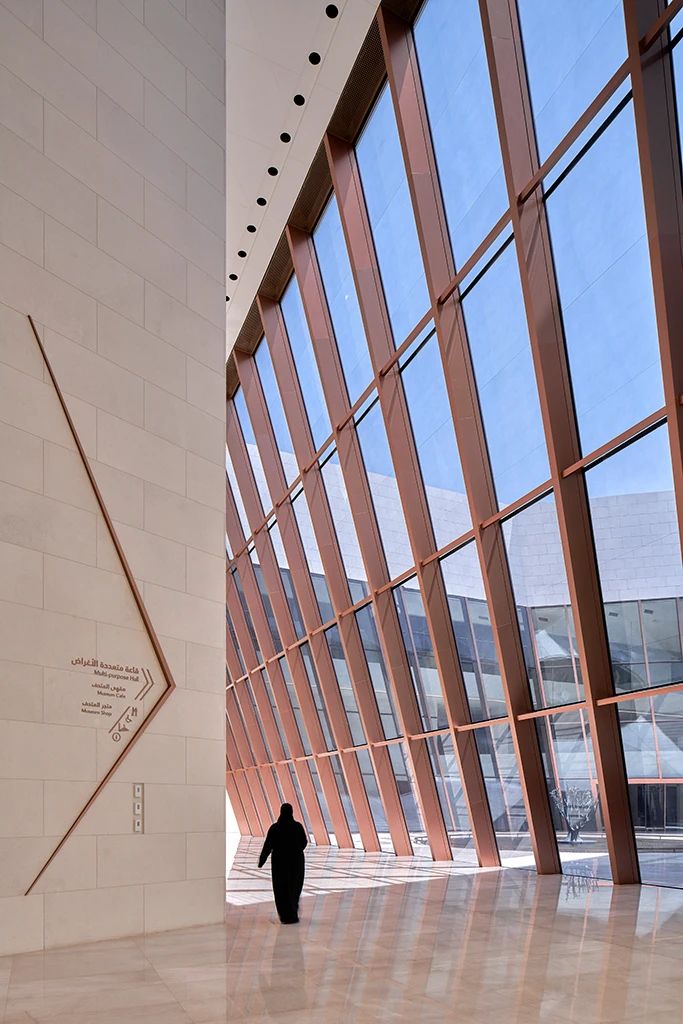
Indoor Space of Museum© Phillip Handforth
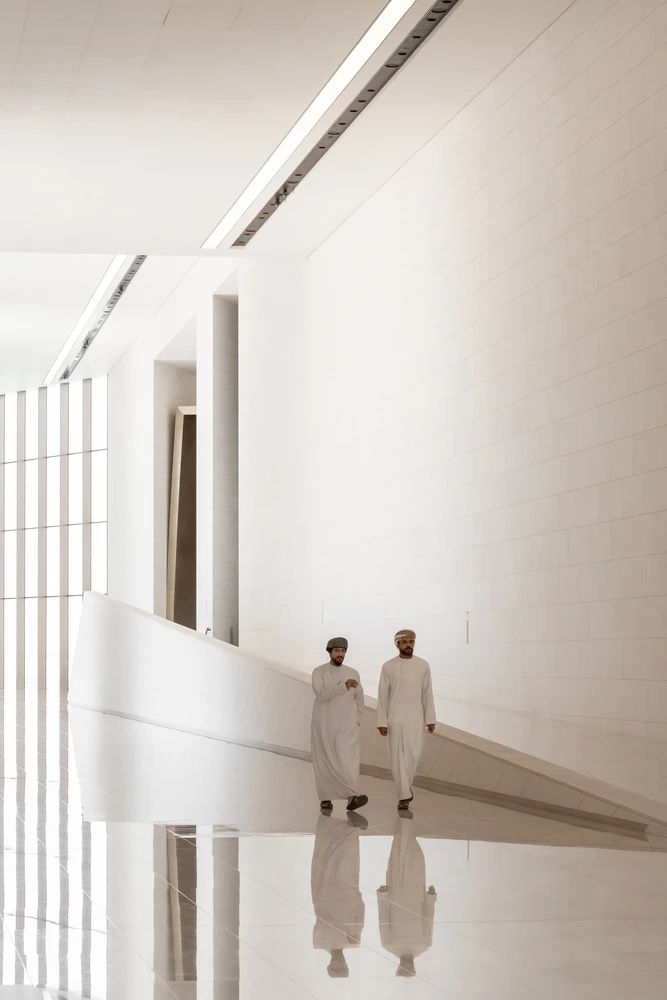
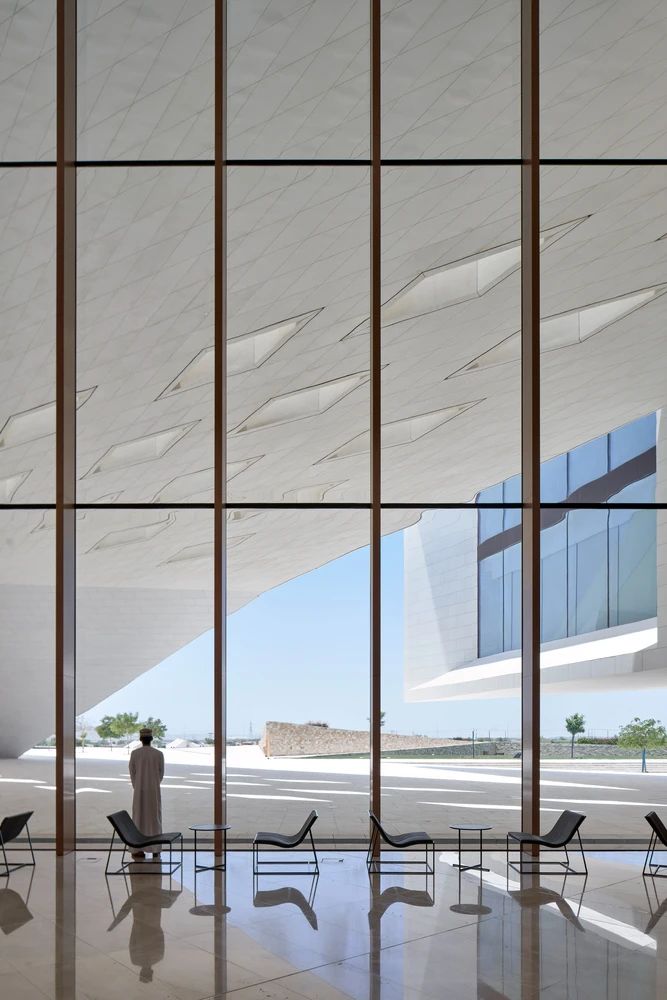
Indoor Space of Museum© Phillip Handforth
Although the building is tall, at least from a distance, it looks like a low building nestled in its own shadow. The white natural stone blends seamlessly with this flat land, and its outdoor space creates grand geometric contours among the sand and stones. However, its northern end resembles a jagged, tall, and angular landmark, extending towards Nizwa.
The huge facade slopes towards the road and extends over the water in front, covered with copper colored aluminum composite panels. The sunlight reflects on the copper colored aluminum plate and the water surface in front of it. The movement trajectory of the sun and the wind that ripples on the water surface constantly change the visual effect presented by the material through light and shadow. In the evening, as the afterglow of the setting sun turns the desert into a fiery red color, the copper surface begins to shine, quaint yet elegant.
03.Quora Education Center
LSE Architects
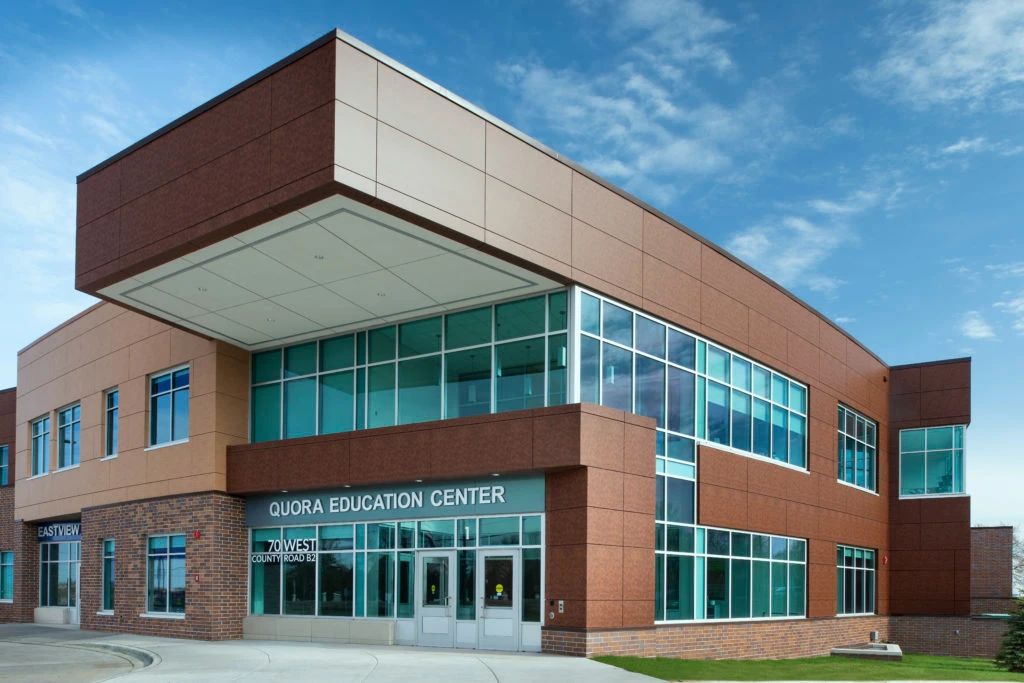

Quora Education Center © Mark Kempf
Quora Education Center in Minnesota is a state-of-the-art educational facility designed specifically to meet the sensory needs of students receiving special education services. The original building was a traditional brick structure school from the 1950s, with poor acoustic performance and a lack of private learning space for students receiving special education services.
To address these issues, LSE Architectural Design Company has designed the new center to have flexible learning spaces suitable for group learning and one-on-one guidance, while also providing more classrooms with natural lighting. The interior decoration adopts soft, movable and suitable furniture for teenagers.
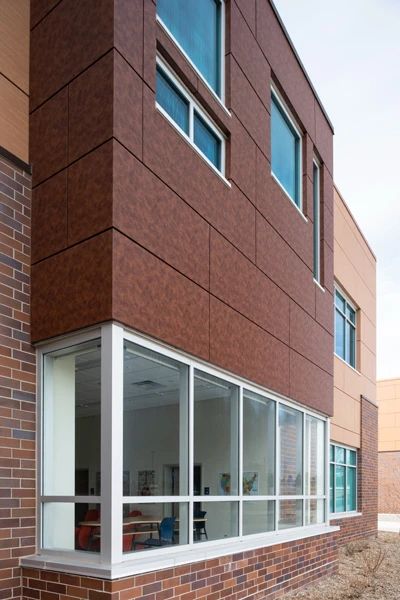
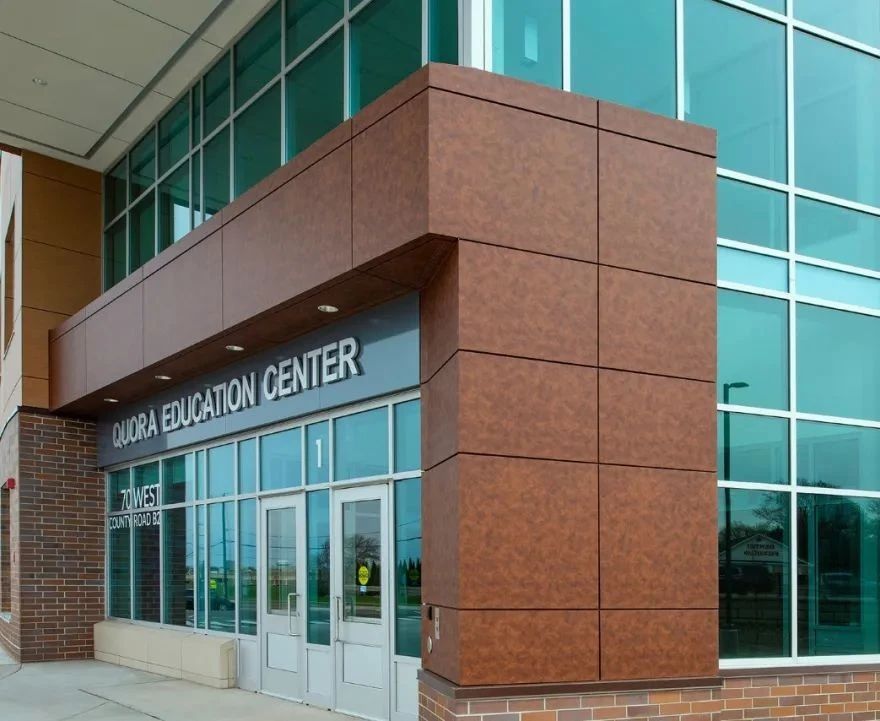
Quora Education Center © Mark Kempf
The attention to students' needs is also reflected in the selection of natural color schemes that meet sensory needs for the school's exterior walls. The exterior walls of the education center use a total of 24300 square feet of aluminum composite materials, including natural color schemes such as iridescent ocean blue, Amazon blue, imitation rusted steel plates, imitation chestnut wood, etc., to meet the sensory needs of special education students.
Quora Education Center's special education program serves students with autism, developmental cognitive impairment, emotional/behavioral disorders, and other health disorders. The architect stated that using the natural color scheme of aluminum composite panels as the exterior wall of the building helps achieve a key design goal, which is that "the building should not be too ornate or the colors too bright", so as not to cause inconvenience to students with special needs.
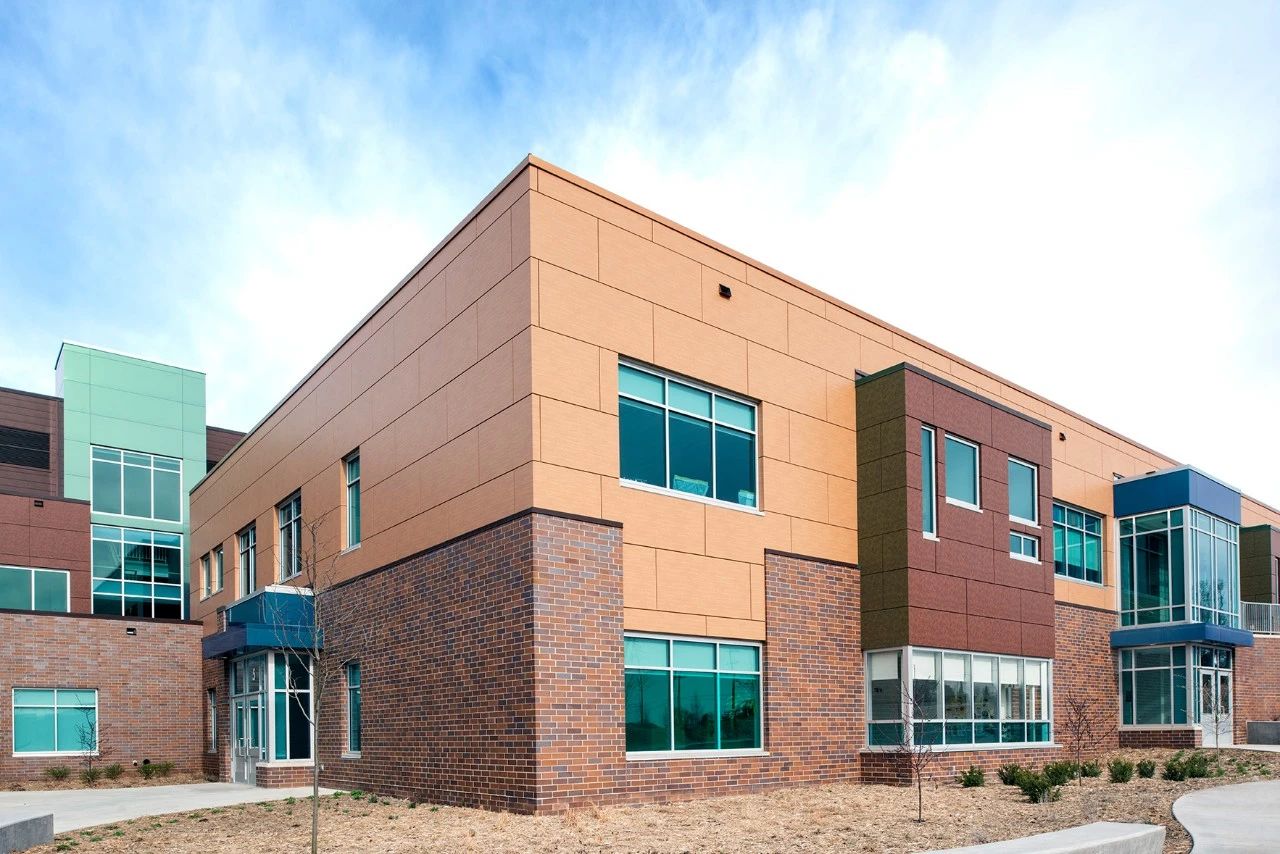
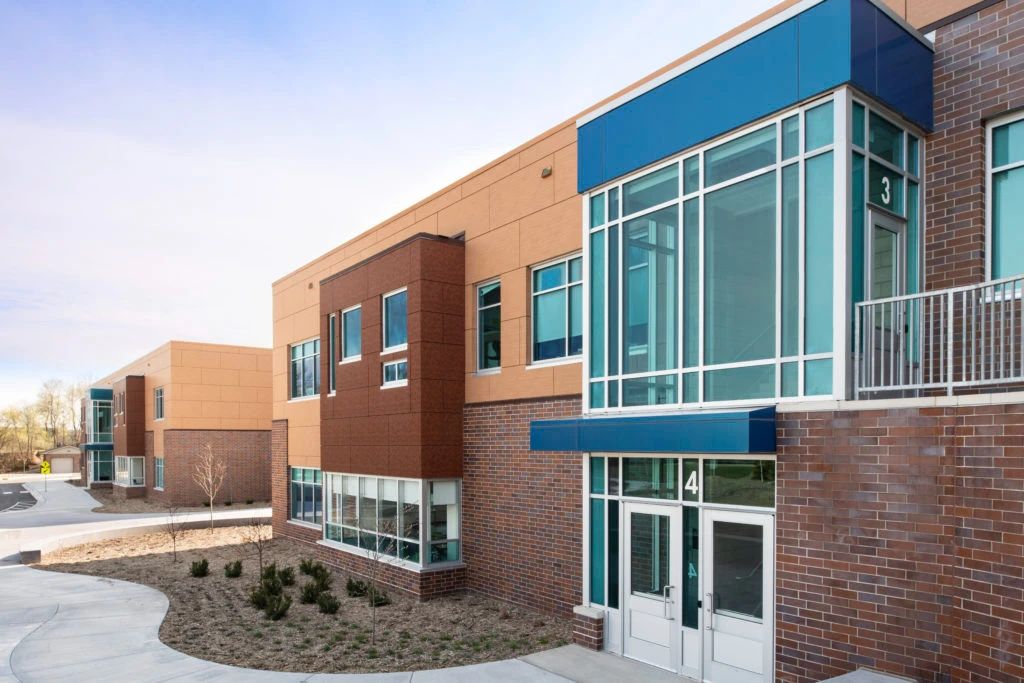
Quora Education Center © Mark Kempf
The chestnut wood veneer and rusted metallic aluminum composite panels align with the concept of natural landscape, and these colors become the unified color scheme of the entire building. The different areas of the building are distinguished by the use of Amazon and ocean colored panels in the Illusion series, especially at the independent entrances of these projects, allowing children to see the shining luster of ocean blue and Amazon green panels when looking at the building from the playground, feeling uplifted rather than uncomfortable.
The architect also extended the natural color theme of the exterior to the interior, using rusted metal panels as decorative accents in the central main lobby. He described this interior design choice as follows: "Sometimes it's fun to place a piece of material within reach, making other intangible materials look more familiar."

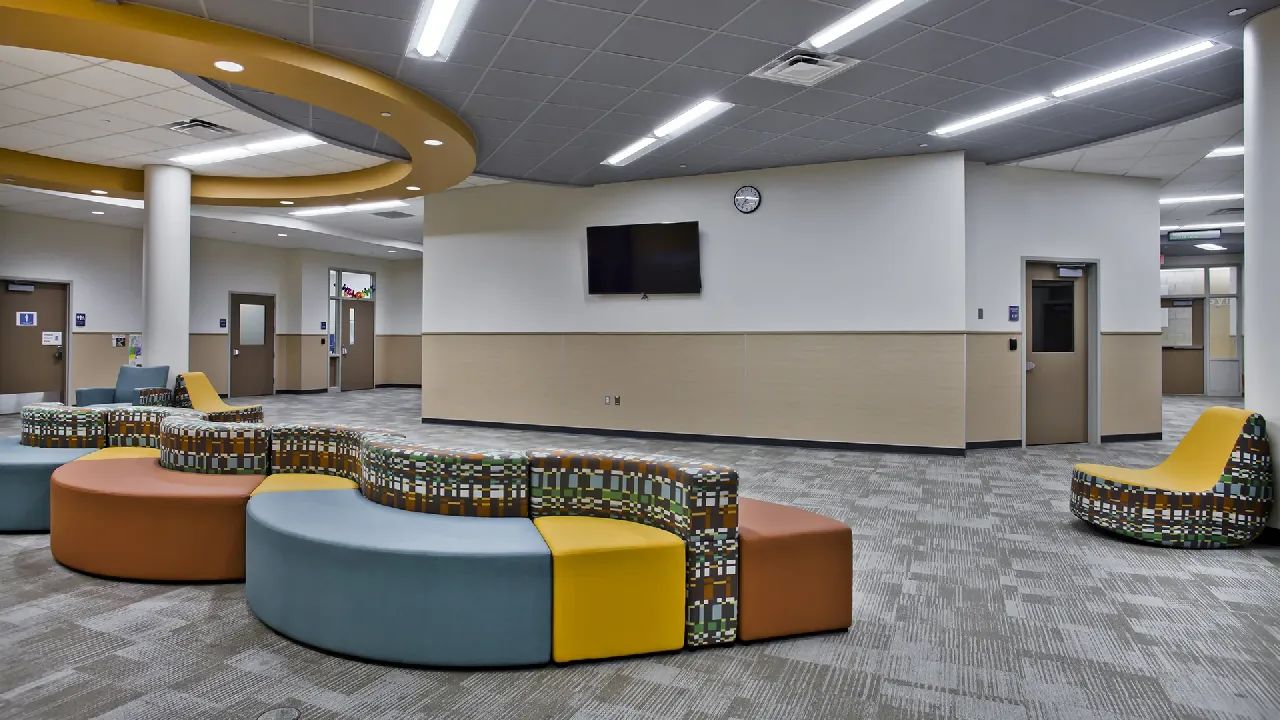

Quora Education Center Indoor Space © Mark Kempf
At the same time, Quora Education Center also fulfills one of the main wishes of the owners, which is that "this new building should not appear too rigid and institutionalized in a oppressive and dull way, but be full of natural atmosphere and charm".
04.Altendorf Lake Villa
Contract Plan AG
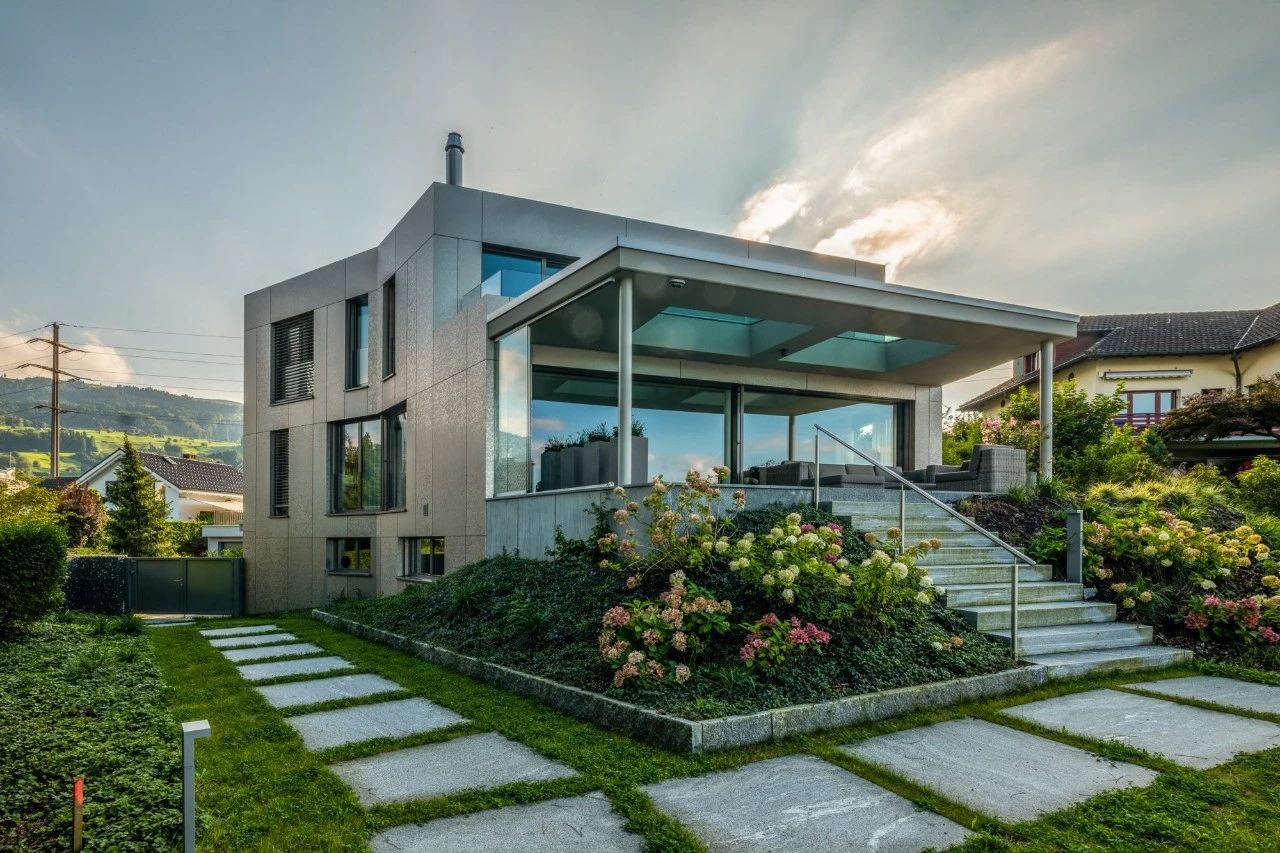
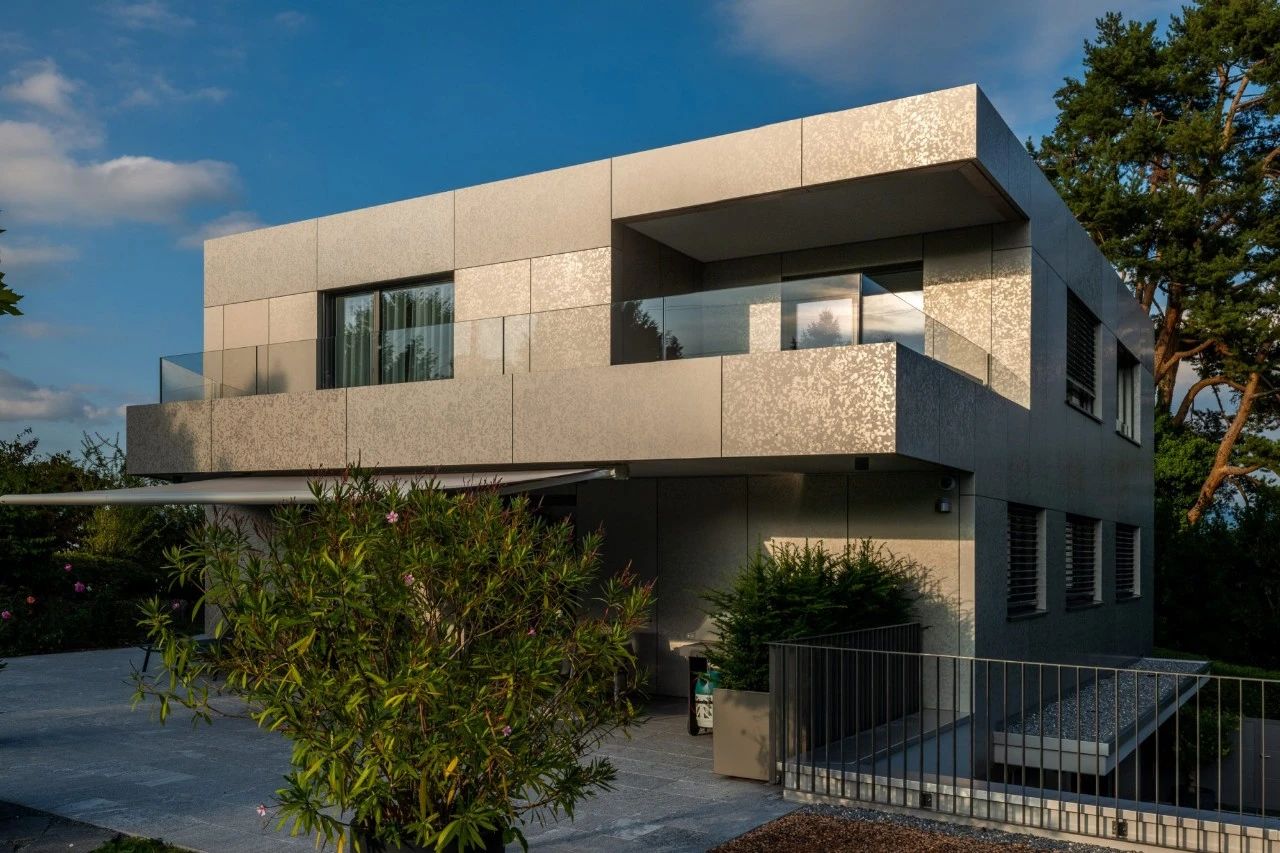
Villa at the lake © Allega GmbH
A house overlooking Lake Zurich is very desirable, and if it has direct access to the lake, such a property would be even more ideal. However, due to the narrow line shape of the plot, the houses had to be built in the second row and could only occasionally catch a glimpse of the lake, so the architect needed to come up with some clever solutions. In fact, this unique new residence is facing a situation where the best lighting direction is southwest, while the lake is most in the northeast direction.
In order to fully utilize the lake view and sunlight, architects must open both sides of the residence and choose a suitable orientation. The architect designed an asymmetric polygon, based on a rectangular plan, with a portion protruding outward and extending towards the lake at a certain angle on the facade facing the lake.
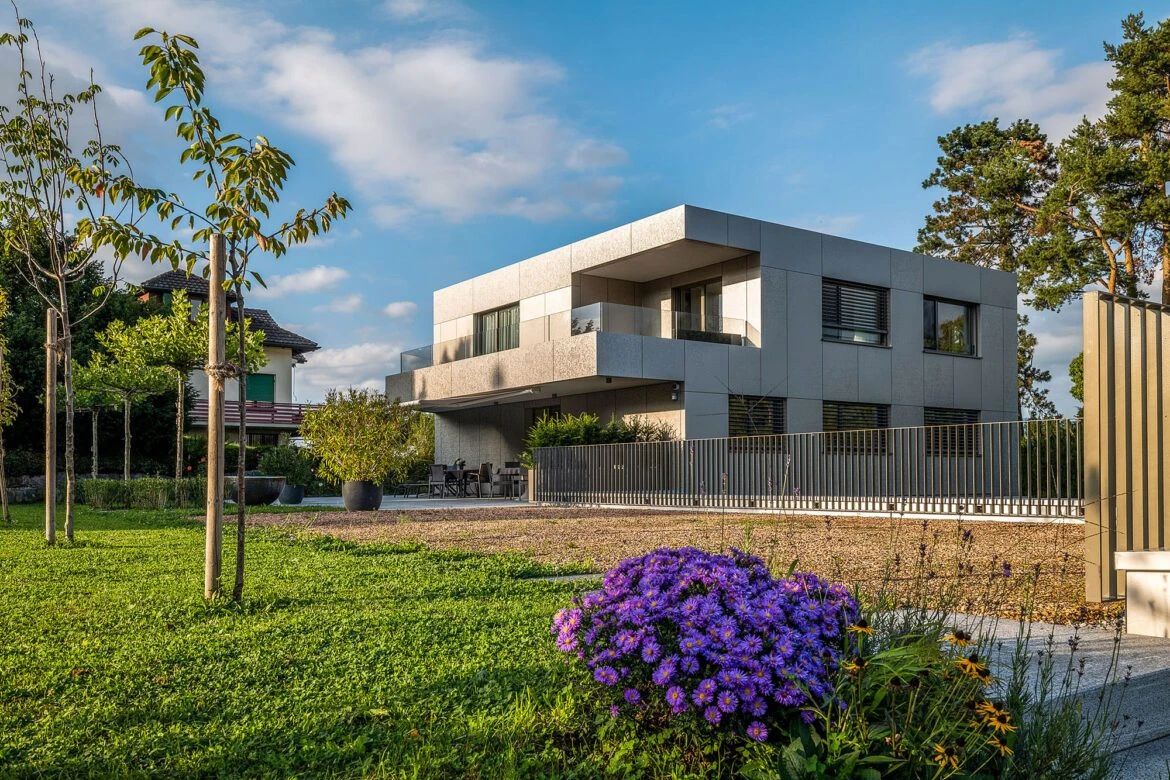
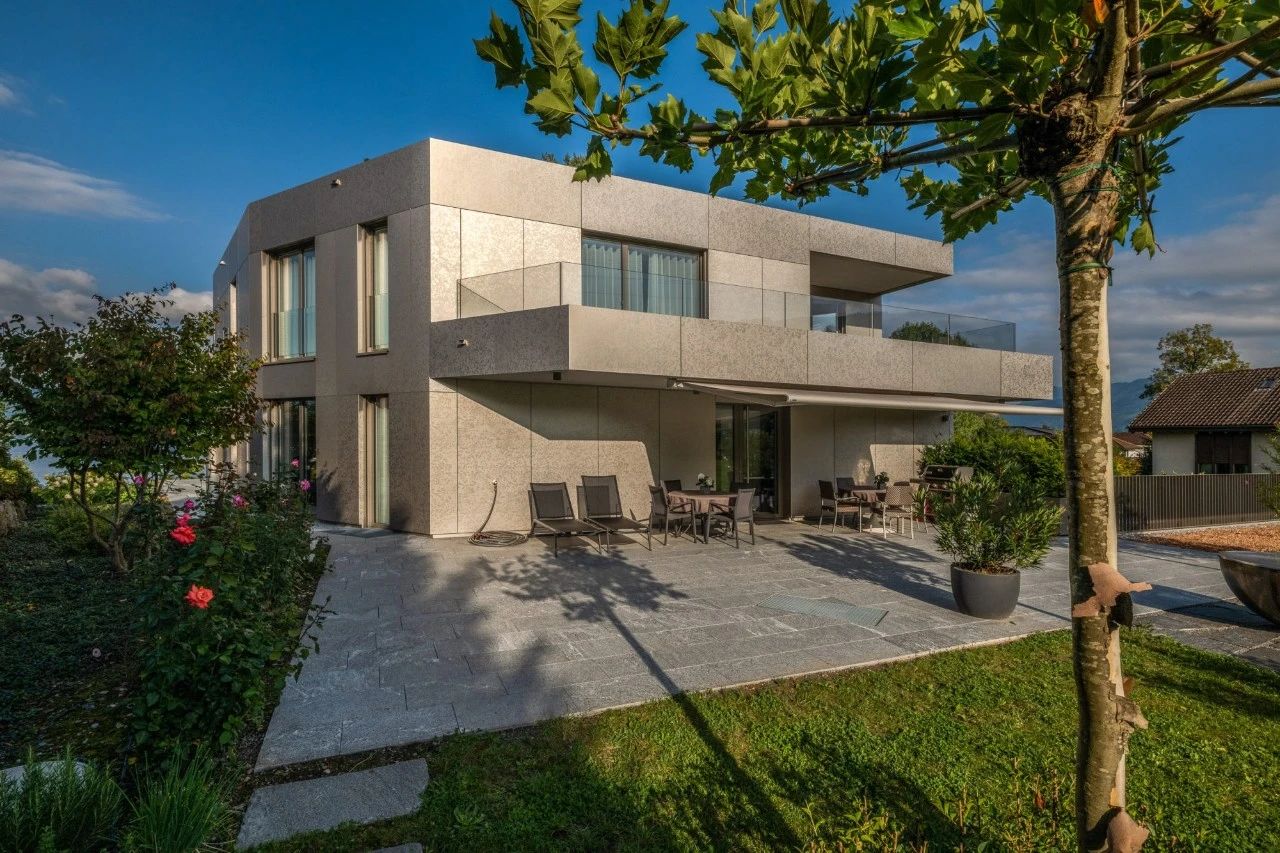
Villa at the lake © Allega GmbH
By utilizing the slight slope of the terrain, the architect designed the first floor to have access to a higher garden on the road facing side and a raised observation terrace on the lake facing side. The whole building seems to just want to peek out of the corner and catch a glimpse of the lake water. In fact, from inside the house, one side has a panoramic view of the open lake, while the other side has a view of the Alps.
For a better view, the living room is located on the first floor, at the same level as the garden overlooking the road and the elevated terrace facing the lake.
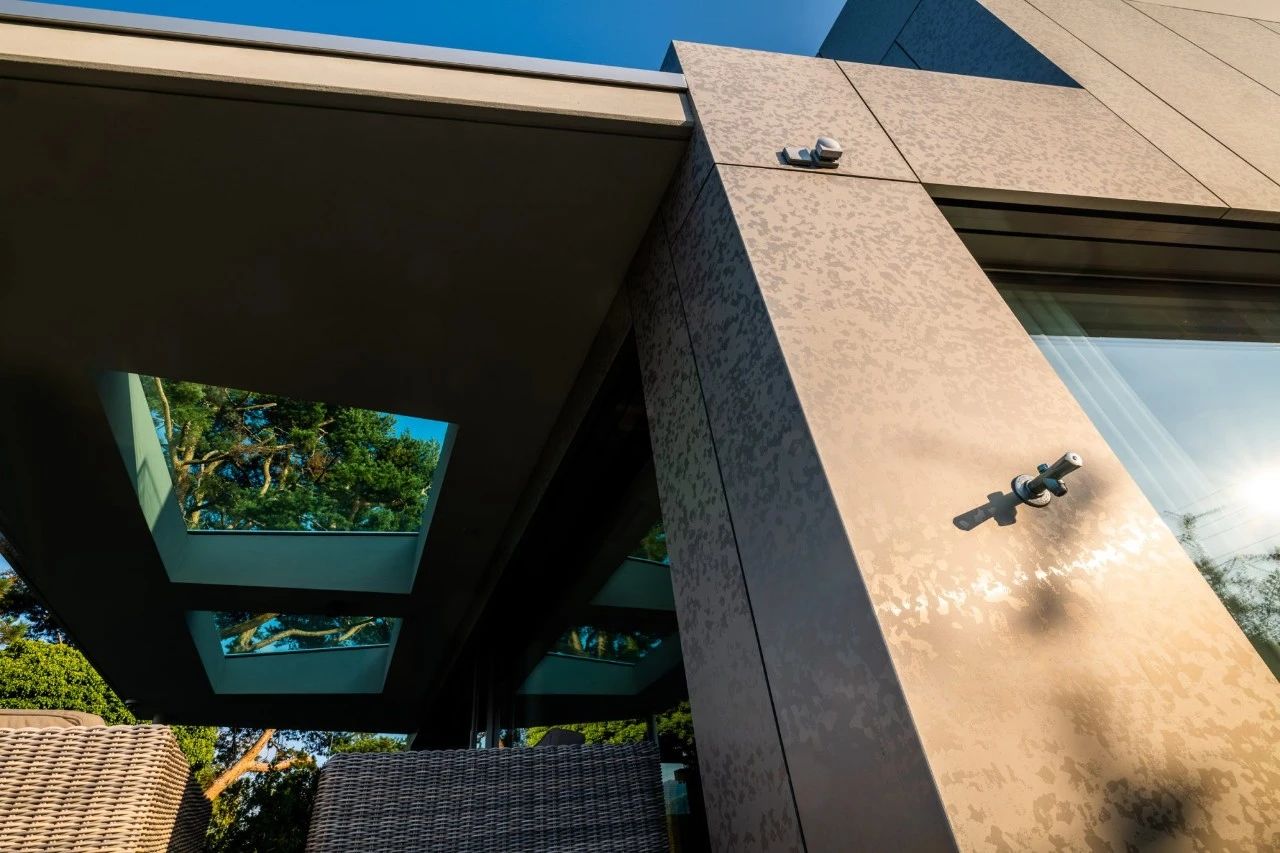
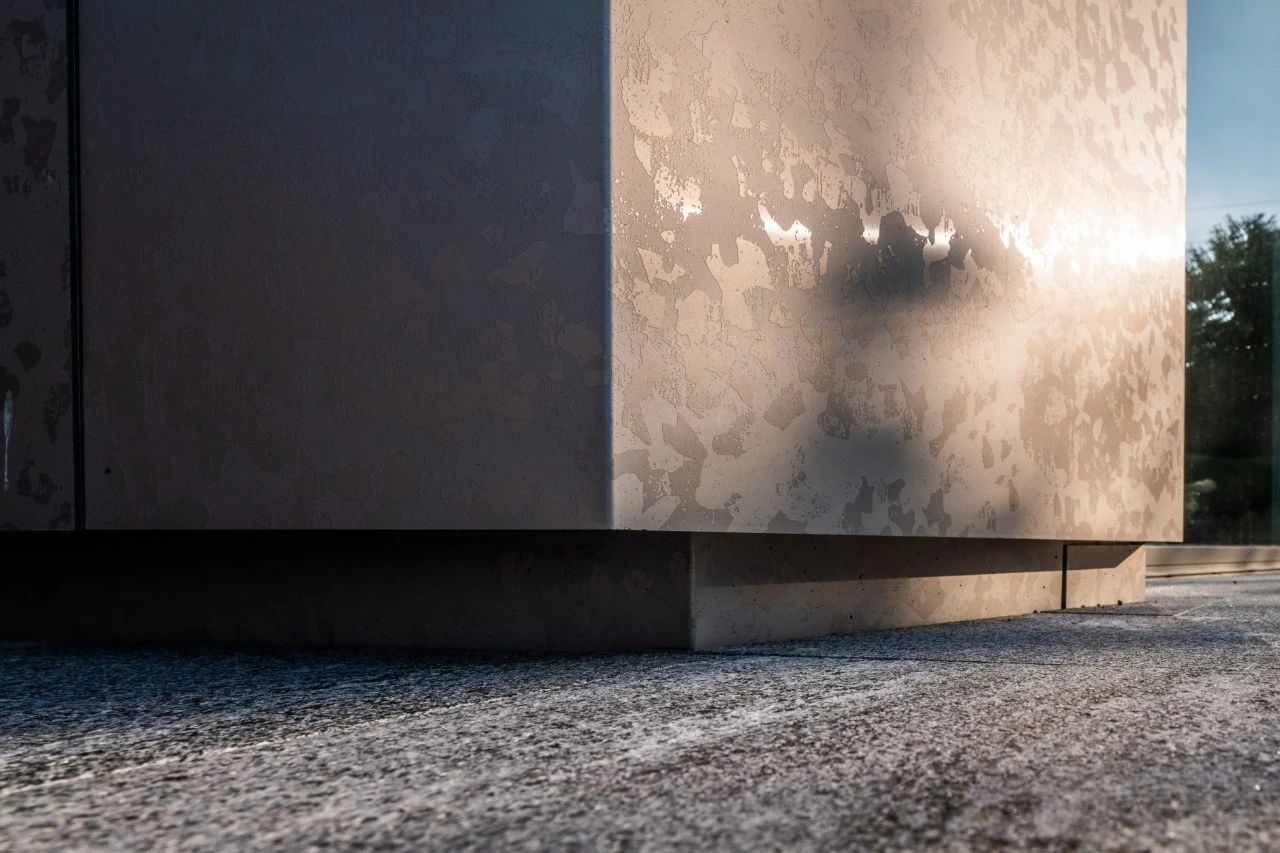
Villa at the lake facade details © Allega GmbH
Although the shape of the building structure is actually limited by the location of the building site, the facade design cleverly utilizes this to highlight the angular shape of the building.
The exterior of the building is made of bronze colored aluminum composite material with special anodizing technology, and the matte gloss reflection on the panels makes the house look like a sedimentary rock with delicate and shiny vein stripes.
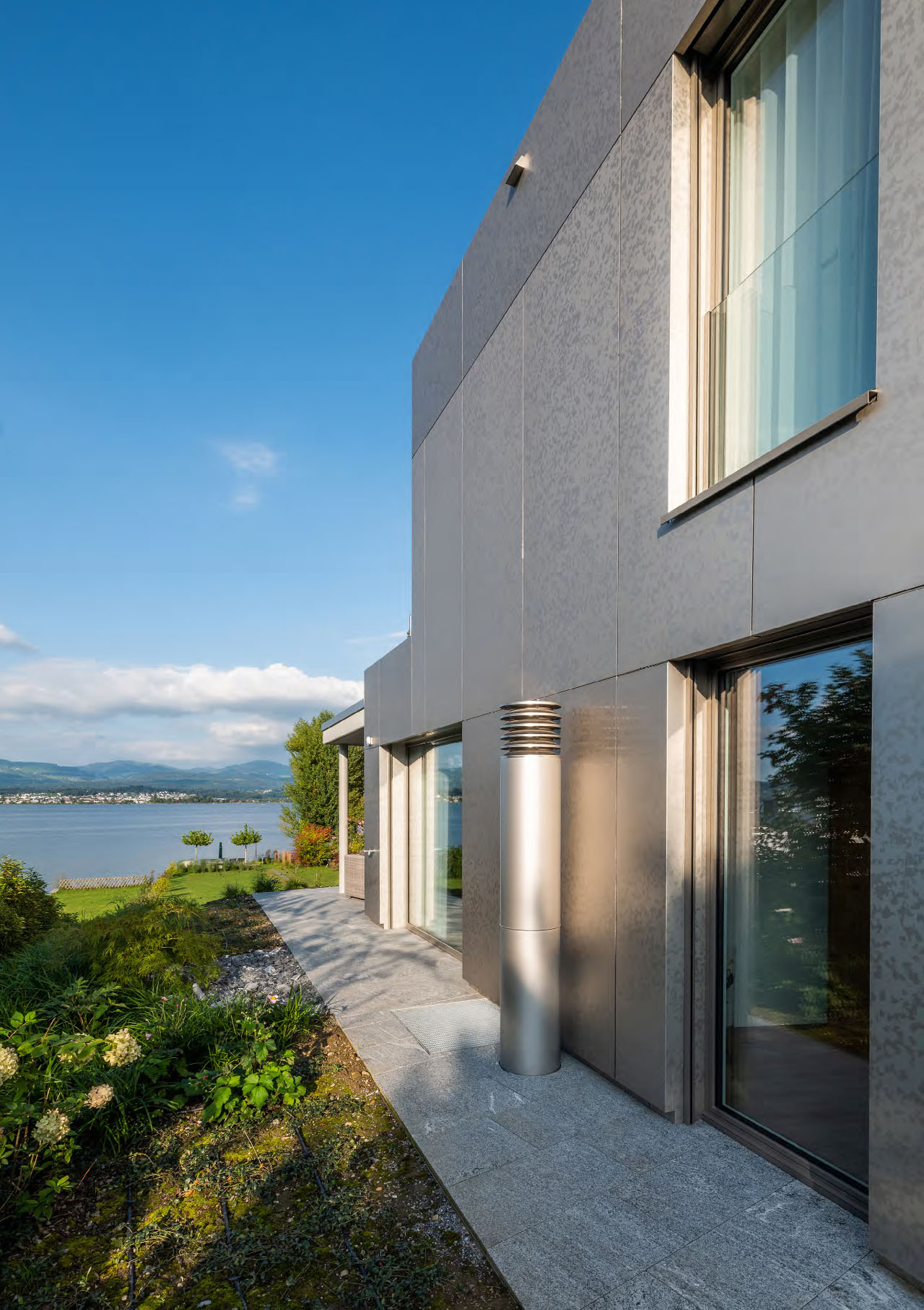
Villa at the lake surroundings © Allega GmbH
Despite its unique and exquisite design, this building quietly hides in the hustle and bustle of Zurich and its nearby foothills, and only those who are particularly attentive will notice it.